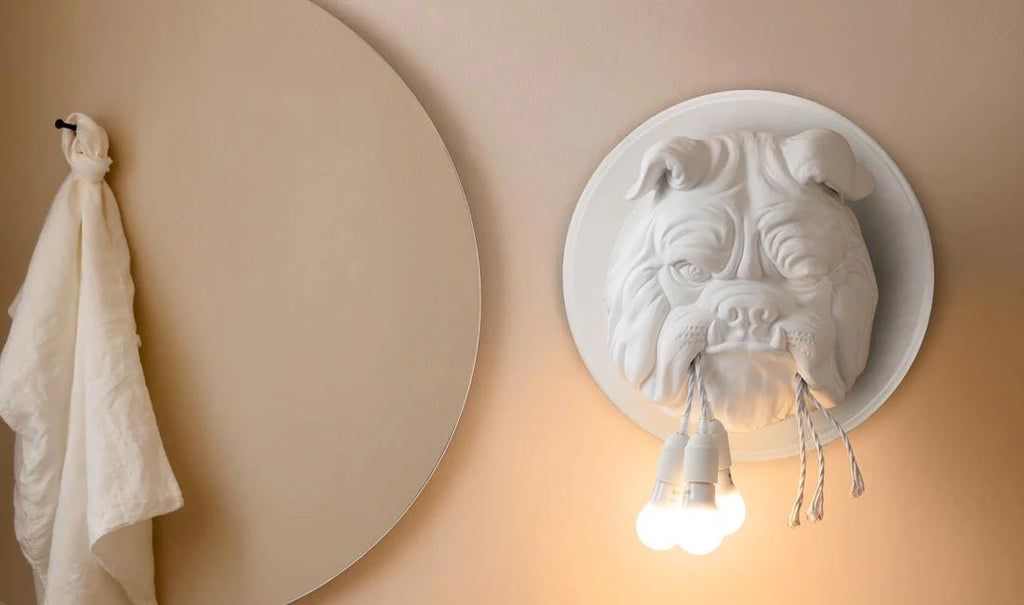Lighting Ideas for the Children's room
Children spend more time at home than anywhere else, and nearly one-third of their lives are spent in their bedrooms.
So how do you arrange your child’s bedroom to foster development and promote well-being?
It's no secret that children don't have the same skills and tools available as adults - they often need help tieing their shoelaces, cleaning their hands, showing them where to cross the street - but what about the environment around us? Have you thought about how the child will be able to reach the sink and wash hands, or will they be able to turn on the light by themselves when they want to play? These are questions that are often overlooked when decorating a home, so we've rounded up the main stopping points with an emphasis on the effect of lighting.
Accessibility
Accessibility is a very important factor because the environment is a crucial component that builds self-confidence in the child that they are capable of doing what they need and want. For example, if the light switch is placed at a height of 1.3 meters (4.2 feet), which would be very convenient for an adult, it may cause problems for children. How about placing this switch 20-30 cm (7-12’’) lower? Another solution is adding a small step stool, helping them reach light switches, sinks, and other high objects without causing a major inconvenience for the parents.

Floor lamps
Where exactly is this lamp placed? How handy is it? Is it beneficial to the child if all they hear is "careful, don't knock it down" every time they play near the floor lamp, or would it be better if this lamp was not a burden, but rather a helper? It is worth thinking about the position and the structure of the light so that it is stable, easy to turn on and it is possible to put it in a place where it is difficult for it to fall over, for example in a corner or next to a large piece of furniture. One should avoid putting a free-standing floor lamp on a carpet (unless the carpet is the entire floor surface).
Table lamps
Table lamps, also known as desk lamps are more suitable for older children, in the primary school or teenage years (because the little ones often sit at lower and smaller tables and are more prone to knocking things down. A good alternative is a stable floor lamp that can be pushed closer to the table).
The table lamp should be easy to maintain so that the child can clean it himself and create an orderly environment around him. It is also important that the lamp is relatively easy to use, sturdy and rounded (it is recommended to avoid touch-sensitive switching).
Functionality
This is very relevant for a playroom or a child's bedroom as it is a common practice to combine both into a single space. While there is nothing wrong with that, extra thought has to be put in when creating such a space. One of the main challenges that have to be addressed is lighting - one must combine evening lighting (lighting intended for soft, warm light), with proper lighting so that the child can perform tasks that require concentration - reading books, putting Legos, creating modeling clay figures and playing with cute dolls.
There are different ways to tackle this issue, for example, using two types of lighting for each function - a smaller wall lamp with warm light to be used as evening lighting and a more proper and brighter ceiling light for more day-to-day activities. Another solution is purchasing a ceiling lamp that offers a dimming function - combining the best of both worlds.
Evening lighting
For most of our team, one of the most vivid memories are bedtime stories read by parents or grandparents... the love, the tenderness, the exciting stories that inspired us to create drawings in the daylight hours. Do you remember this togetherness while reading jokes? And what was your favorite fairy tale?
Well, we hope we took you on a beautiful trip down memory lane. (By the way, my favorite fairy tale was "The Hobbit and the bookmaker"). Soft lighting is important in the area where the fairy tale is read - in an armchair, in the bed, or at the table. In these cases, a floor lamp or a wall lamp would be most convenient, but each has its pros and cons. The wall lamp is safe in the sense that it cannot be knocked over, but there is also a downside - it cannot be moved where it is more convenient, so the range of movement is limited. The floor lamp is easy to move and the book can be read every night elsewhere... however, it is possible that the floor lamp will be less useful in the child's everyday life and it is more likely to be knocked over. Of course, if the area of the nursery allows it, you can combine these two and get an additional light (floor lamp), which can then be moved around the house as needed.
Reading fairy tales encourages you to dream... but what about interesting room details? The ones that, when you look at them again, you think, hey, I missed this last time and it looks like... a cloud. Here are a couple of options if you want to make the children's room a little more magical.
Conclusion
Remember that there is no single recipe for properly arranging lighting in a nursery. It is painstaking work, during which you have to try out what everyday life with a child might look like, creating a comfortable symbiosis for adults and children and spending time together. Feel free to contact us if you want any advice from an interior designer from Luminesy (it is free of charge!).






